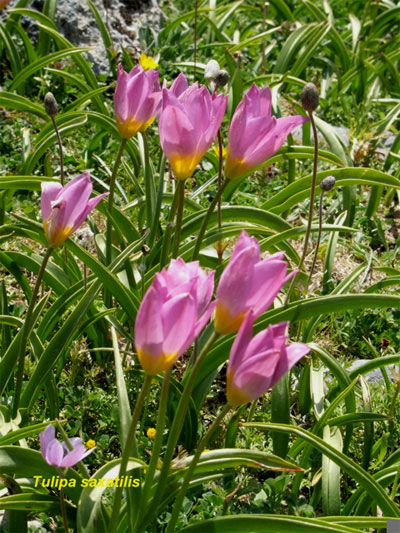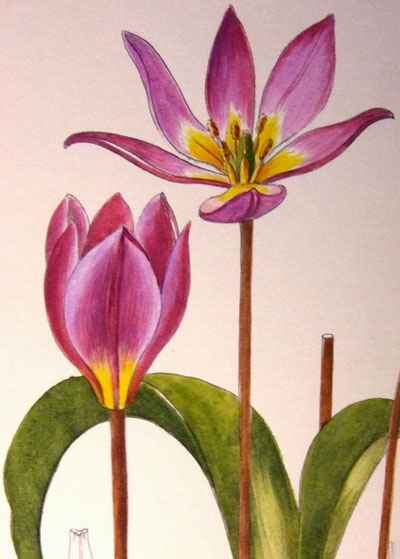Born in Constantinople 1856; died at his home, Hillside, Sevenoaks, Kent on 29 December 1951.
G. P. Baker was a distinguished horticulturist and plantsman who in 1933 was one of the recipients of the Royal Horticultural Societyís highest accolade, the Victoria Medal of Honour (only 63 individuals can hold this gold medal at any one time).
Baker travelled to numerous mountainous areas so he could combine his passions for mountaineering and plant-hunting: the Pyrenees, High Atlas, Mount Olympus, Crete. He introduced plants from these places into British gardens, and evidently expended a considerable amount of both time and money on his expeditions.
Baker is best remember for a tulip that bears his name: it was named by Sir Daniel Hall, an authority on Tulipa. But Tulipa bakeri is rather like a mystery wrapped in an enigma. Where did Baker actually collect it? And, what exactly is Tulipa bakeri? Is it just a subspecies of Tulipa saxatilis, the old tulip of Candia which was known to Jacobean gardeners?
Many people go to the Omalos Upland Plain in the White Mountains of Crete to see the tulips that abound there. These are frequently said to be Tulipa bakeri, and it is also asserted that the plain is the only place where they grow. Both these statements are demonstrably inaccurate, but without Bakerís own diaries and botanical notes we cannot resolve the enigma.
What we do know is that in the late 1930s, a decade after his Cretan visits, Baker grew a tulip in his garden in Kent which was painted for the famous Curtisís botanical magazine. This painting portrays a tulip, under the name Tulipa bakeri indeed, with dusky crimson petals, yet the vast majority of the Omalos tulips are brilliant pink. Maybe one day his diaries and notebooks will come to light and enlighten us.
I have visited Crete for 15 years, every spring, with parties of like-minded people who want to see the tulips. They are a glorious, unforgettable sight - but are they Bakerís tulip?
If you can provide any assistance, please contact me on editor[at]shnh.org.uk.
 |
 |
Click here to read a segment of G. P. Bakerís book ĎMountaineering Memories of the Pastí.